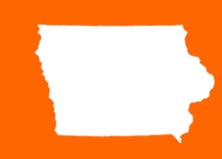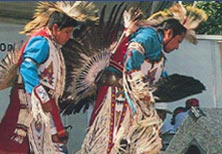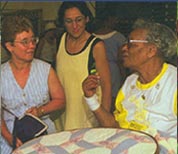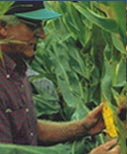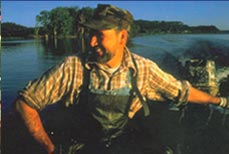| Questions to be Answered |
| Is a picture really worth a thousand words? |
| What types of visual information are important in documenting art work and other significant items in the life of a community? |
| How can visual images and the spoken word work together to give a fuller picture of a community’s traditions? |
|
- Discuss the importance of still photography and video images in documenting Iowa’s folklife and culture. What can photos tell us that words cannot? How can a combination of photographic or video images and spoken word information work together to create a whole picture? When can black and white photographs be more useful than color, and vice versa? What advantages does video recording have over still photos, and vice versa?
- Divide the class into small groups and give each group a set of five photographs in the handout. Each student should write captions for the five photographs.
- Compare the captions each student has written with the actual captions of the photos. What did the photos tell without any other information? What information was missing? What more would students like to know about the photos? List three questions you would ask someone in one of the pictures.
- Play the chosen video segment without the sound. Have students write down what they could tell about the segment without benefit of the sound. Then, play the video with the narration on the tape. Discuss the advantages of video, which brings spoken word and moving image together.
- Discuss why photographic illustrations of artifacts, tools, workshops, and events are most useful when accompanied with notes; what can be learned by simply looking at a portrait of a person who made the object; why an uncluttered foreground in a photograph makes the picture more effective; how photography can document a process.
- Have students bring in a small selection of photographs, or a home video or 8 mm film, and show them in class. Analyze the photos, video, or film from a “professional” point of view. Is it good documentation? Could it stand some editing? Would it benefit from some narration? Is the camera work good? If you were reshooting this video or film for a folklife documentation project, how would you improve it?
HIGH SCHOOL ADDITIONS: If you have access to a camera, practice documenting a community event by means of video or still photography. Show the results to classmates and have them critique your work. If possible, edit the video or choose the best photos for a “showing” or a small exhibition in the classroom. Considering the fact that all photographs and video shots are taken due to the choices of the photographer, discuss the merits of the idea that a camera never lies.
Locate some family photographs if possible, preferably some that are not very familiar to you. Look through the photos and list all of the information you can get from just looking at the photos. Then interview someone in your family who knows a lot about the photos. Compare your views with the information you collect in the interview. (You could also do this by swapping some family photos with a friend!)
|
